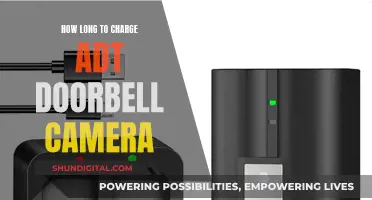
Getting the focus right is a big part of quality photography. Autofocus (AF) is a feature that allows digital cameras and smartphones to automatically sharpen the image and focus on a specific spot or subject with little to no input from the user. It enhances the quality of the photo over fixed-focus cameras and allows for close-ups and macro shots.
Autofocus systems rely on one or more sensors to determine the correct focus. An electronic rangefinder has a display instead of a motor; the adjustment of the optical system has to be done manually until the indication. Autofocus methods are distinguished as active, passive, or hybrid types.
Passive autofocus, which is the most common type found in smartphones, does not require additional specialised hardware. It relies on light and the contrast in the scene to ascertain focus. The most popular method of passive autofocus is contrast-detection autofocus, which uses a trial-and-error approach to find the correct point of focus.
Active autofocus, on the other hand, relies on a dedicated internal device that calculates the distance between the camera and the subject. The most common form of active autofocus in smartphones is laser autofocus, which uses an infrared laser beam to determine the distance to the subject.
Hybrid autofocus combines two or more autofocus technologies to improve speed and accuracy.
| Characteristics | Values |
|---|---|
| Definition | Auto-focus is a feature of digital cameras that allows them to focus correctly on a subject. |
| Purpose | To enhance the quality of the photo over fixed-focus cameras and allow for close-ups or macro shots. |
| Types | Active, passive, and hybrid autofocus. |
| Passive autofocus | Uses light and the contrast in the scene to ascertain focus. |
| Active autofocus | Calculates the distance between the camera and the subject. |
| Hybrid autofocus | Combines two or more autofocus technologies to compensate for the weaknesses of a single method. |
| Passive autofocus methods | Contrast-detection autofocus and phase-detection autofocus. |
| Active autofocus methods | Laser autofocus, ultrasonic autofocus, and infrared autofocus. |
| Pros of autofocus | Faster, more accurate, and allows for close-up and macro shots. |
| Cons of autofocus | Requires additional hardware, can be confused by reflections, and doesn't always work in low-light conditions. |
What You'll Learn

Active, passive and hybrid autofocus systems
There are three types of autofocus (AF) systems: active, passive and hybrid. Each system has its own unique way of focusing, with advantages and disadvantages.
Passive Autofocus
Passive autofocus systems are the most common type of AF, using either phase detection or contrast measurement to determine focus. Phase detection is the faster of the two methods, using an array of pixels with phase-detection photodiodes to determine if the image is in focus. Contrast measurement, on the other hand, is slower as it relies on moving the focus motor back and forth to find the clearest image, but it does not require additional hardware. Passive AF struggles in low-light conditions and when focusing on objects with no edges or contrast, such as a blue sky or white wall.
Active Autofocus
Active AF systems use a dedicated internal device to calculate the distance between the camera and the subject, and then adjust the optical system for correct focus. Active systems are independent of the optical system and can use ultrasonic sound waves or infrared light to measure distance. Active AF works well in low-light conditions, but it requires additional hardware and can be confused by reflective surfaces.
Hybrid Autofocus
Hybrid AF systems combine two or more AF technologies to improve speed, accuracy and reliability. For example, a hybrid system might pair phase detection with contrast measurement, using the former for speed and the latter for accuracy. Hybrid systems can be categorised as passive, active, or a combination of both, depending on the methods used.
The Evolution of Smartphone Cameras: How Are They Made?
You may want to see also

Contrast-detection autofocus
This is the simplest, most accurate method of autofocus technology and is, therefore, the cheapest. It works on the same principle as the human brain when we manually focus without the aid of tools. We look at edges and move the focus ring until the edge contrast is the sharpest.
A major downside to this method is that the phone or camera doesn't know when it has reached the point of maximum contrast. Therefore, it will always need to go past the focal point before going back to a more focused image. This can sometimes be noticed when taking photos on a smartphone; the image will sometimes become blurrier before it gets clearer.
Troubleshooting Camera Battery Exhaustion Issues
You may want to see also

Phase-detection autofocus
PDAF works by dividing incoming light into pairs of images and comparing them. When light rays entering the camera lens from the very extreme edges converge on a single point on the camera sensor, the image is in focus. If the light rays do not meet at the same point, the system will determine how to adjust the lens to reach focus. This is known as the phase difference, and it is used to calculate how far the lens needs to be moved to bring the image into focus.
In DSLR cameras, PDAF is achieved using mirrors to reflect copies of the primary sensor's light at a dedicated phase-detection sensor. Smartphone cameras, on the other hand, use dedicated PDAF pixels built into the image sensor, with phase-detecting photodiodes that create a dual perspective. These photodiodes are physically masked so that light from only one side of the lens reaches them, producing left-looking and right-looking pixels on a single image sensor. The phase difference between these left and right offset images is then calculated to determine the focus point.
While PDAF is faster and more accurate than contrast detection, it does have some drawbacks. The small size of smartphone sensors and pixels can make noise an issue in low-light situations, and vertical strips can cause problems with focusing on horizontal lines. To address these limitations, smartphones sometimes use a hybrid approach, combining PDAF with other focusing technologies such as laser autofocus.
The Evolution of Color Photography: Capturing Life's Colors
You may want to see also

Laser autofocus
Some smartphone cameras also use a combination of auto-focus systems, known as hybrid auto-focus, to overcome the limitations of specific methods. For example, pairing PDAF with CDAF can result in faster and more accurate auto-focus performance.
Charging the Bdpower Wi-Fi Camera: A Step-by-Step Guide
You may want to see also

Dual-pixel autofocus
In DPAF, each pixel on the image sensor has two photodiodes that can operate separately or together. Each photodiode has a separate lens over it. When light passes through these lenses and hits the photodiodes, the processor analyses each photodiode's signal for focus. Once focus is achieved, the signals are then combined to record the image. This allows each pixel to have a dual role, which is what makes DPAF sensors unique.
DPAF improves on PDAF by using every pixel on the sensor for PDAF, which aids in calculating phase differences and focus. This improves accuracy and speed compared to standard PDAF. Additionally, DPAF takes more readings across the whole sensor, smoothing out noise and allowing for fast autofocus even in low-light environments.
DPAF has been featured on most new camera models released by Canon, from the $10,000 EOS C300 cinema camera to the consumer EOS Rebel T7i. It has also been implemented in smartphone cameras by Samsung, Google, and HTC, and several other camera companies have filed patents for similar types of sensors.
Focusing an Old Camera: Tips and Tricks for Sharp Photos
You may want to see also
Frequently asked questions
Autofocus (AF) is a feature that allows digital cameras and smartphones to automatically sharpen the image and focus on a specific spot or subject with little to no input from the user.
Autofocus systems rely on one or more sensors to determine the correct focus. The camera's autofocus sensor(s) are the engine behind achieving accurate focus and are laid out in various arrays across the image's field of view. Each sensor measures relative focus by assessing changes in contrast at its respective point in the image.
There are three main types of autofocus: active, passive, and hybrid. Passive autofocus can be further divided into contrast-detection autofocus and phase-detection autofocus.







